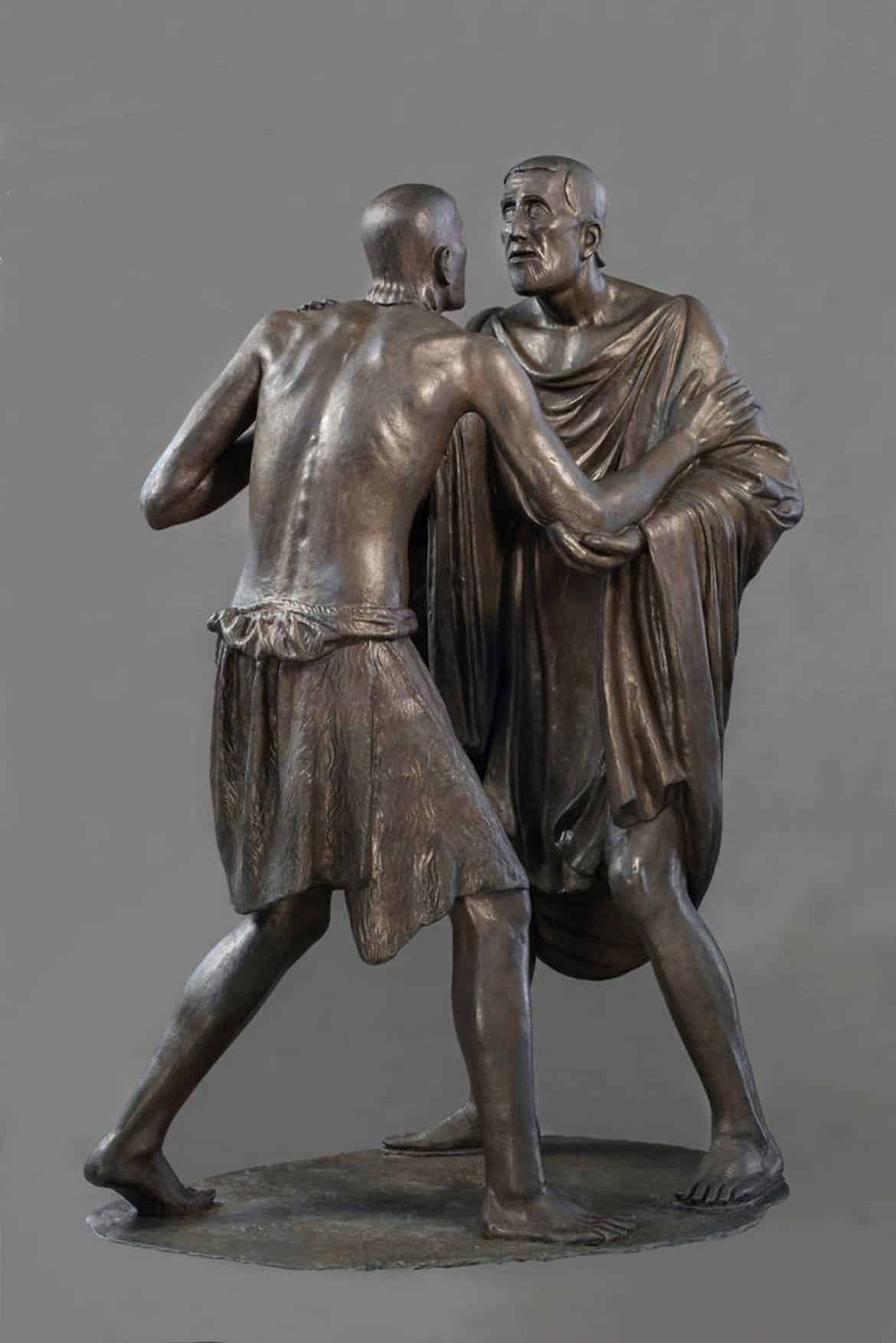Martini to Guttuso. A square for six protagonists of italian 20th century

Arturo Martini, Il Figliol Prodigo, bronzo, 140 100 219 cm, Casa di riposo Jona Ottolengh, Acqui Terme (AL)
Curated by Casa Testori
Scientific supervision by Elena Pontiggia
How did the great Italian artists bear witness to a passion for mankind in the dramatic and restless course of the short century? The path proposed by Casa Testori starts from the title of this edition of the Meeting, to give an exciting visual representation through the presentation of a series of great works that document the impetus and emotion of art that has managed to set itself up as a guardian of humanity.
The exhibition will take the form of a square at the heart of one of the pavilions of the Fiera, where six large works will appear to the visitor as surprising companions on a journey that goes to the heart of the Meeting’s theme. The artists, sculptors and painters, are among the most important protagonists of Italy’s 20th century. Here they are in chronological order:
- Arturo Martini “The Prodigal Son” (1929) An imposing bronze work that is a cornerstone of the early 20th century in Italy, it is preserved at the Ottolenghi Retirement Home in Acqui Terme. The monumentality of the work is put at the service of the poignant image of the embrace between father and son.
- Mario Sironi “Justice and Law” (1935). This is the large preparatory drawing for the mosaic in Milan’s Palace of Justice. Sironi’s humanity is a suffering and solemn one, moved by the desire to be the bearer of shared values.
- Marino Marini “Miracle” (1952). This is one of the pieces that made the great sculptor from Pistoia famous. It is a large bronze sculpture preserved at the Marino Marini Museum in Florence. The leap of the horse with the rider gives form to the impetus of the question that burns unceasingly in the heart of every person.
- Leoncillo (Leonardi) “San Sebastiano nero” (1962). This is a large black semi-refractory terracotta; the figure stands like a log, obstinately alive, despite the torments and amputations to which it has been subjected by history.
- Titina Maselli “Metrò” (1975). This imposing pictorial work, more than 15 metres long, is capable of restoring the dimension of a human presence that we do not see inside the carriages of a metro train caught in motion. At the heart of the work is the daily experience of travellers: the artist’s sympathy is all for those we do not see, but know to be presences behind those windows.
- Renato Guttuso “Spes contra Spem” (1982).This is one of the Sicilian artist’s most important paintings. A painting that is the synthesis of an entire life, in which the artist brings together all the great passions, human, political and civil, for which he spared no effort.













